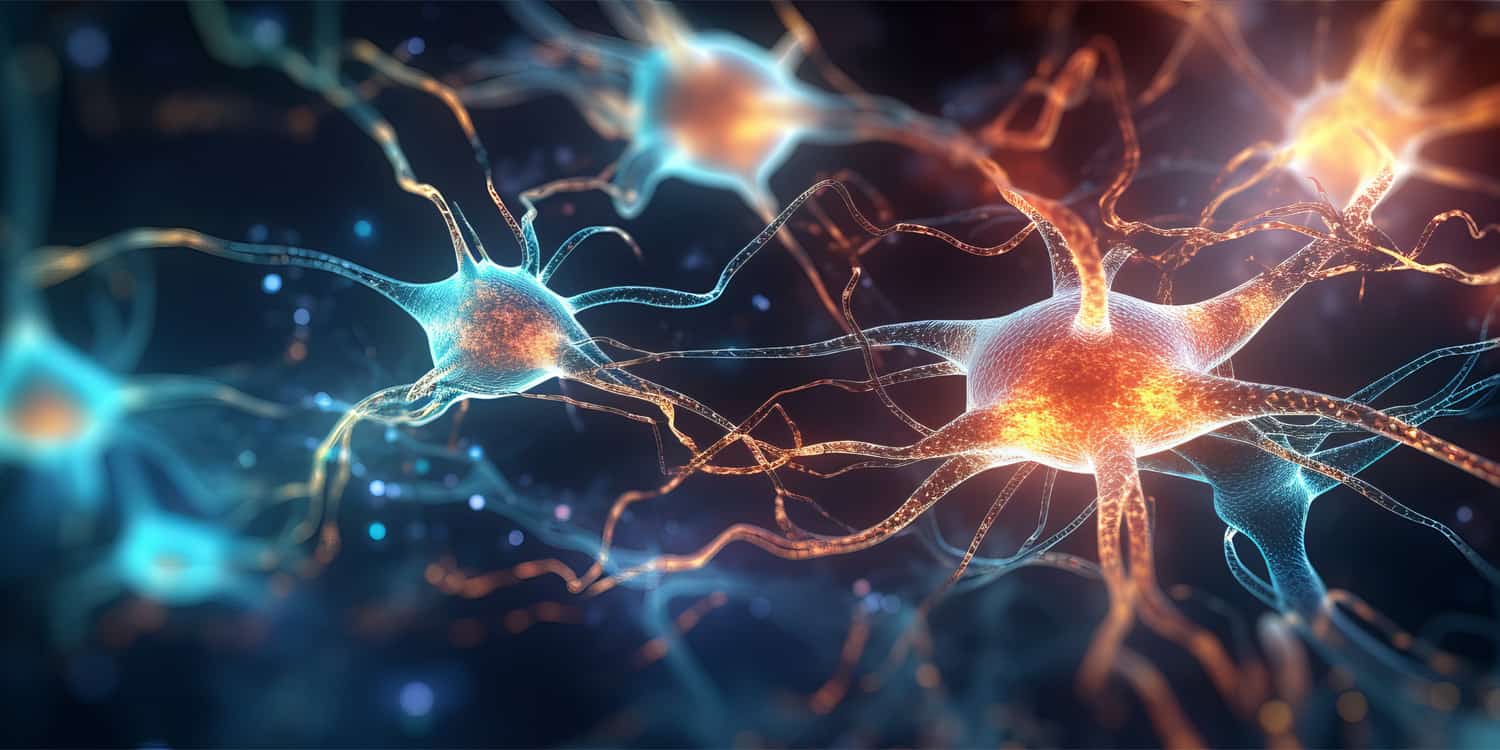Alzheimer’s disease may harm the brain in two distinct phases, according to a new study funded by the National Institutes of Health and published in Nature Neuroscience. Using advanced brain mapping techniques, researchers discovered that in the first phase, which occurs before any symptoms appear, certain types of brain cells are gradually damaged. In the second phase, the disease accelerates, causing widespread brain damage that coincides with memory loss and other noticeable symptoms. These findings could change the way scientists understand Alzheimer’s and open up new possibilities for developing targeted treatments.
The motivation behind this research stems from the difficulty in diagnosing Alzheimer’s early, as much of the brain damage occurs before symptoms become apparent. Alzheimer’s disease is characterized by a gradual loss of brain function due to the buildup of plaques and tangles—protein clumps that interfere with communication between brain cells. Researchers wanted to understand these early, silent changes in the brain in greater detail. By identifying the first signs of damage at the cellular level, they hoped to create opportunities for early intervention, potentially halting or slowing the progression of the disease before significant memory loss and cognitive decline occur.
“One of the challenges to diagnosing and treating Alzheimer’s is that much of the damage to the brain happens well before symptoms occur. The ability to detect these early changes means that, for the first time, we can see what is happening to a person’s brain during the earliest periods of the disease,” said Richard J. Hodes, the director of the NIH National Institute on Aging. “The results fundamentally alter scientists’ understanding of how Alzheimer’s harms the brain and will guide the development of new treatments for this devastating disorder.”
To carry out the study, scientists analyzed brain tissue from 84 donors who had died at various stages of Alzheimer’s disease. These tissue samples were obtained from long-term studies, such as the Adult Changes in Thought study and the University of Washington Alzheimer’s Disease Research Center.
The focus was on a brain region called the middle temporal gyrus, which is critical for memory, language, and vision and is especially vulnerable to Alzheimer’s-related damage. Using advanced genetic analysis and brain mapping tools developed as part of the NIH’s Brain Research Through Advancing Innovative Neurotechnologies® (BRAIN) Initiative, the researchers studied over 3.4 million individual brain cells. This allowed the research team to create a detailed timeline of cellular changes in the brain.
The researchers discovered that Alzheimer’s impacts the brain in two distinct phases. In the first phase, which can begin years before any symptoms show, certain brain cells, particularly inhibitory neurons, start to die. Inhibitory neurons play a key role in regulating brain activity, and their loss may disrupt neural circuits, potentially setting the stage for further brain damage. Interestingly, these cells, known as somatostatin inhibitory neurons, were found to be among the first to be affected in the early stages of the disease. This was a surprising finding, as previous studies suggested that Alzheimer’s primarily damages excitatory neurons, which are responsible for stimulating brain activity.
In contrast, the second phase of Alzheimer’s, which aligns with the appearance of symptoms like memory loss, involves a rapid spread of damage. This phase is characterized by widespread inflammation, increased cell death, and the accumulation of plaques and tangles in the brain. By the time symptoms become noticeable, the brain is already experiencing significant structural damage. The researchers emphasized that this second phase is when most of the traditionally studied Alzheimer’s markers, such as plaques and tangles, appear rapidly.
One of the most important findings of the study was that the early phase of Alzheimer’s is relatively “quiet,” meaning that the damage happens gradually and without noticeable symptoms. During this period, plaques begin to form slowly, and the brain’s immune system becomes activated, but the damage to the brain’s structure is minimal. The insulation around neurons, which helps transmit signals efficiently, also starts to degrade. However, it is the death of the inhibitory neurons that appears to trigger the more extensive changes that come later.
This discovery challenges the traditional view that excitatory neurons are the primary victims of Alzheimer’s disease. The researchers proposed that the loss of inhibitory neurons may lead to an imbalance in brain signaling, which could contribute to the breakdown of neural circuits and the eventual onset of symptoms. Additionally, the study confirmed previous findings about how Alzheimer’s affects the brain, while also identifying new cellular changes that occur during the disease’s progression.
Further supporting this idea, a separate NIH-funded study at the Massachusetts Institute of Technology found that certain genes, including one called REELIN, may influence how vulnerable neurons are to Alzheimer’s. This gene, along with the involvement of star-shaped brain cells known as astrocytes, could provide new insights into why some brain cells are more resistant to damage. These findings align with the current research, which also pointed to astrocytes as potentially playing a protective role in the brain.
While this study represents a significant step forward in understanding the early stages of Alzheimer’s, there are some limitations. The research focused primarily on a single brain region, the middle temporal gyrus, which is known to be heavily affected by Alzheimer’s. However, Alzheimer’s impacts multiple brain regions, so future research could expand this approach to other areas to build a more comprehensive map of the disease’s progression across the entire brain. Additionally, the study relied on postmortem brain samples, which provide a snapshot of the disease at various stages, but cannot capture the dynamic process of Alzheimer’s development over time in a living brain.
Another limitation is the challenge of translating these findings into treatments. While the discovery of early cellular changes offers hope for new interventions, it remains difficult to detect Alzheimer’s at these early stages in living patients. Developing tools to monitor these early changes in real time will be critical for creating treatments that can target the disease before symptoms appear.
In the future, researchers aim to build on this work by exploring how these early changes might be detected through brain scans or blood tests. They are also interested in studying how these cellular changes interact with genetic risk factors, such as the presence of the APOE4 gene, which is known to increase the likelihood of developing Alzheimer’s. By understanding how genetic factors influence the brain’s vulnerability to damage, scientists may be able to identify individuals who are at risk and intervene even earlier.
“This research demonstrates how powerful new technologies provided by the NIH’s BRAIN Initiative are changing the way we understand diseases like Alzheimer’s. With these tools, scientists were able to detect the earliest cellular changes to the brain to create a more complete picture of what happens over the entire course of the disease,” said John Ngai,the director of The BRAIN Initiative®. “The new knowledge provided by this study may help scientists and drug developers around the world develop diagnostics and treatments targeted to specific stages of Alzheimer’s and other dementias.”
The study, “Integrated multimodal cell atlas of Alzheimer’s disease,” was authored by Mariano I. Gabitto, Kyle J. Travaglini, Victoria M. Rachleff, Eitan S. Kaplan, Brian Long, Jeanelle Ariza, Yi Ding, Joseph T. Mahoney, Nick Dee, Jeff Goldy, Erica J. Melief, Anamika Agrawal, Omar Kana, Xingjian Zhen, Samuel T. Barlow, Krissy Brouner, Jazmin Campos, John Campos, Ambrose J. Carr, Tamara Casper, Rushil Chakrabarty, Michael Clark, Jonah Cool, Rachel Dalley, Martin Darvas, Song-Lin Ding, Tim Dolbeare, Tom Egdorf, Luke Esposito, Rebecca Ferrer, Lynn E. Fleckenstein, Rohan Gala, Amanda Gary, Emily Gelfand, Jessica Gloe, Nathan Guilford, Junitta Guzman, Daniel Hirschstein, Windy Ho, Madison Hupp, Tim Jarsky, Nelson Johansen, Brian E. Kalmbach, Lisa M. Keene, Sarah Khawand, Mitchell D. Kilgore, Amanda Kirkland, Michael Kunst, Brian R. Lee, Mckaila Leytze, Christine L. Mac Donald, Jocelin Malone, Zoe Maltzer, Naomi Martin, Rachel McCue, Delissa McMillen, Gonzalo Mena, Emma Meyerdierks, Kelly P. Meyers, Tyler Mollenkopf, Mark Montine, Amber L. Nolan, Julie K. Nyhus, Paul A. Olsen, Maiya Pacleb, Chelsea M. Pagan, Nicholas Peña, Trangthanh Pham, Christina Alice Pom, Nadia Postupna, Christine Rimorin, Augustin Ruiz, Giuseppe A. Saldi, Aimee M. Schantz, Nadiya V. Shapovalova, Staci A. Sorensen, Brian Staats, Matt Sullivan, Susan M. Sunkin, Carol Thompson, Michael Tieu, Jonathan T. Ting, Amy Torkelson, Tracy Tran, Nasmil J. Valera Cuevas, Sarah Walling-Bell, Ming-Qiang Wang, Jack Waters, Angela M. Wilson, Ming Xiao, David Haynor, Nicole M. Gatto, Suman Jayadev, Shoaib Mufti, Lydia Ng, Shubhabrata Mukherjee, Paul K. Crane, Caitlin S. Latimer, Boaz P. Levi, Kimberly A. Smith, Jennie L. Close, Jeremy A. Miller, Rebecca D. Hodge, Eric B. Larson, Thomas J. Grabowski, Michael Hawrylycz, C. Dirk Keene, and Ed S. Lein.




